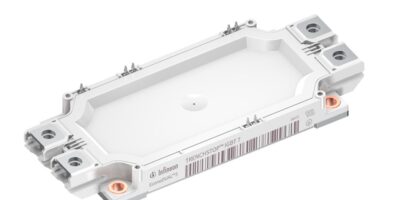
NXP puts imaging radar on broader footing
The S32R45 – the industry’s first dedicated radar processor in 16nm technology – already unveiled in mid-2020, has now been released for mass production. It is now joined by the S32R41 model, with which the chip manufacturer aims to cover the requirements of an even broader market. It should be able to be used in a larger number of vehicles.
Both processors support autonomy levels L2+ to L5 and 360-degree environmental detection using 4D imaging radar. This allows vehicles not only to detect relatively bulky, large objects, but also to create finer resolution images. This allows for better mapping of the environment as well as a better understanding of the driving situation. The images allow the classification of objects such as particularly vulnerable road users and vehicles in complex urban scenarios. For example, imaging radar can identify a motorbike driving next to a large delivery truck or a child running into the lane between parked cars. It should even be able to cleanly detect the kerb, said Matthias Feulner, Senior Director Driver Assistance Systems at NXP.
In addition, the radar sensor technology must simultaneously measure speed and be able to classify objects at a distance of up to 300 m, i.e. beyond the range of human vision. Radar sensors must also be able to detect fast-moving vehicles and distinguish them from slower-moving or static obstacles, such as a lost tyre, in the driver’s path. NXP’s latest imaging radar processors can meet all these requirements, Feulner said.

For higher autonomy levels, NXP expects that vehicles will be equipped with multiple radar sensors for 360° coverage.
NXP公司的4 d成像雷达传感器是第一个过程or to allow simultaneous 3-in-1 multimode radar detection in the near, mid and far ranges, enabling simultaneous detection of a large field of view around the vehicle. To achieve this, the manufacturer uses an innovative architecture – it uses 192 virtual antenna channels to increase performance beyond the sensor’s pure hardware capabilities. The performance increase is achieved through proprietary radar hardware acceleration, which can achieve 64 times the computing power of standard processors, and high-resolution radar software algorithms that can achieve an angular resolution of less than one degree. In addition, there are special MIMO signal shapes that allow the simultaneous parallel operation of several antenna channels. This architecture thus overcomes the disadvantages of other high-resolution sensors such as lidar and massive MIMO radar with a high number of antennas, whose cost and complexity limit them to a limited number of applications.
“Our new imaging radar processors deliver high-resolution images that improve object detection and classification, revolutionising the way vehicles perceive their environment. This is a significant step towards improving road safety and saving lives,” said Torsten Lehmann, EVP and GM, Radio Frequency Processing at NXP. “The extended S32R- family leverages our leadership in radar signal processing, high-resolution algorithms and advanced MIMO waveforms so that the fast-growing Level 2+ vehicle segment can also benefit from the advantages of an imaging radar.”
Incidentally, the S32R41 will be the industry’s first 16nm radar processor tailored for L2+ autonomous driving applications. Industry analysts predict that this vehicle segment could account for nearly 50 per cent of production by 2030. The L2+ segment, which has been poorly supported by traditional high-resolution sensors, now benefits from the advantages of 4D imaging radar sensor technology with up to six corner, front and rear radar sensors for 360-degree perception of the vehicle environment.
NXP is positioning the S32R45 as the flagship 6th generation radar chipset for use in vehicles. The component is designed to pave the way for autonomous driving up to the most demanding Level 5 applications. At this level, more than ten imaging radar sensors may be required per vehicle. In addition, the S32R45 also supports transportation, traffic management and industrial applications where reliable high-resolution detection is required.
The combination of the S32R45 and S32R41 radar processors with NXP’s TEF82xx RFCMOS transceivers delivers the high angular resolution, power and range required for production-ready radar solutions. The S32R platform offers a common architecture for software reuse and fast development times, as well as a high-performance hardware security engine, and supports OTA updates and compliance with the latest cybersecurity standards.
Related articles:
High-res 77 GHz radar sensor detects objects at greater distance
Oxbotica, Navtech team for radar sensor for autonomous vehicles
Tier ones at Auto Shanghai: New HPC generation, dovetailing with the cloud





